
Endocrinology is a branch of biology and medicine dealing with the endocrine system, its diseases, and its specific secretions known as hormones. It is also concerned with the integration of developmental events proliferation, growth, and differentiation, and the psychological or behavioral activities of metabolism, growth and development, tissue function, sleep, digestion, respiration, excretion, mood, stress, lactation, movement, reproduction, and sensory perception caused by hormones. Specializations include behavioral endocrinology and comparative endocrinology.

Stress, either physiological, biological or psychological, is an organism's response to a stressor such as an environmental condition. Stress is the body's method of reacting to a condition such as a threat, challenge or physical and psychological barrier. There are two hormones that an individual produces during a stressful situation, these are well known as adrenaline and cortisol. There are two kinds of stress hormone levels. Resting (basal) cortisol levels are normal everyday quantities that are essential for standard functioning. Reactive cortisol levels are increases in cortisol in response to stressors. Stimuli that alter an organism's environment are responded to by multiple systems in the body. In humans and most mammals, the autonomic nervous system and hypothalamic-pituitary-adrenal (HPA) axis are the two major systems that respond to stress.

Nikolaas "Niko" Tinbergen was a Dutch biologist and ornithologist who shared the 1973 Nobel Prize in Physiology or Medicine with Karl von Frisch and Konrad Lorenz for their discoveries concerning the organization and elicitation of individual and social behavior patterns in animals. He is regarded as one of the founders of modern ethology, the study of animal behavior.

The fight-or-flight or the fight-flight-or-freeze-fawn is a physiological reaction that occurs in response to a perceived harmful event, attack, or threat to survival. It was first described by Walter Bradford Cannon. His theory states that animals react to threats with a general discharge of the sympathetic nervous system, preparing the animal for fighting or fleeing. More specifically, the adrenal medulla produces a hormonal cascade that results in the secretion of catecholamines, especially norepinephrine and epinephrine. The hormones estrogen, testosterone, and cortisol, as well as the neurotransmitters dopamine and serotonin, also affect how organisms react to stress. The hormone osteocalcin might also play a part.
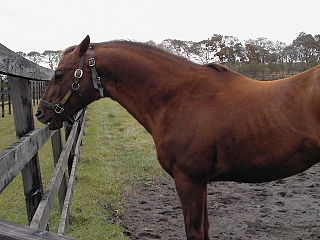
Cribbing is a form of stereotypy (equine oral stereotypic behaviour), otherwise known as wind sucking or crib-biting. Cribbing is considered to be an abnormal, compulsive behavior seen in some horses, and is often labelled a stable vice. The major factors that cause cribbing include stress, stable management, genetic and gastrointestinal irritability.

Allostatic load is "the wear and tear on the body" which accumulates as an individual is exposed to repeated or chronic stress. The term was coined by Bruce McEwen and Eliot Stellar in 1993. It represents the physiological consequences of chronic exposure to fluctuating or heightened neural or neuroendocrine response which results from repeated or prolonged chronic stress.
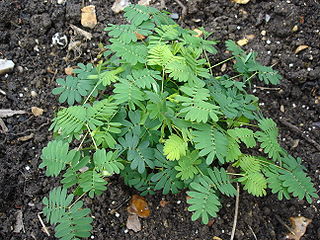
Plant perception is the ability of plants to sense and respond to the environment by adjusting their morphology and physiology. Botanical research has revealed that plants are capable of reacting to a broad range of stimuli, including chemicals, gravity, light, moisture, infections, temperature, oxygen and carbon dioxide concentrations, parasite infestation, disease, physical disruption, sound, and touch. The scientific study of plant perception is informed by numerous disciplines, such as plant physiology, ecology, and molecular biology.
Chronic stress is the physiological or psychological response induced by a long-term internal or external stressor. The stressor, either physically present or recollected, will produce the same effect and trigger a chronic stress response. There is a wide range of chronic stressors, but most entail relatively prolonged problems, conflicts and threats that people encounter on a daily basis. And several chronic stressors, including "neighbourhood environment, financial strain, interpersonal stress, work stress and caregiving.", have been identified as associated with disease and mortality.

Pain negatively affects the health and welfare of animals. "Pain" is defined by the International Association for the Study of Pain as "an unpleasant sensory and emotional experience associated with actual or potential tissue damage, or described in terms of such damage." Only the animal experiencing the pain can know the pain's quality and intensity, and the degree of suffering. It is harder, if even possible, for an observer to know whether an emotional experience has occurred, especially if the sufferer cannot communicate. Therefore, this concept is often excluded in definitions of pain in animals, such as that provided by Zimmerman: "an aversive sensory experience caused by actual or potential injury that elicits protective motor and vegetative reactions, results in learned avoidance and may modify species-specific behaviour, including social behaviour." Nonhuman animals cannot report their feelings to language-using humans in the same manner as human communication, but observation of their behaviour provides a reasonable indication as to the extent of their pain. Just as with doctors and medics who sometimes share no common language with their patients, the indicators of pain can still be understood.
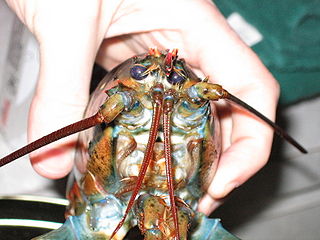
Pain in crustaceans is a scientific debate which questions whether they experience pain or not. Pain is a complex mental state, with a distinct perceptual quality but also associated with suffering, which is an emotional state. Because of this complexity, the presence of pain in an animal, or another human for that matter, cannot be determined unambiguously using observational methods, but the conclusion that animals experience pain is often inferred on the basis of likely presence of phenomenal consciousness which is deduced from comparative brain physiology as well as physical and behavioural reactions.
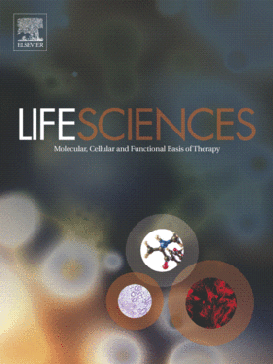
Life Sciences is a weekly peer-reviewed scientific journal covering research on the molecular, cellular, and physiological mechanisms of pharmacotherapy. It was started in 1962 by Pergamon Press.

Neurobiology of Aging is a peer-reviewed monthly scientific journal published by Elsevier. The editor-in-chief is Peter R. Rapp. Neurobiology of Aging publishes research in which the primary emphasis addresses the mechanisms of nervous system-changes during aging and in age-related diseases. Approaches are behavioral, biochemical, cellular, molecular, morphological, neurological, neuropathological, pharmacological, and physiological.
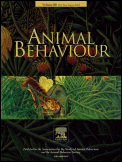
Animal Behaviour is a double-blind peer-reviewed scientific journal established in 1953 as The British Journal of Animal Behaviour, before obtaining its current title in 1958. It is published monthly by Elsevier for the Association for the Study of Animal Behaviour in collaboration with the Animal Behavior Society. It covers all aspects of ethology, including behavioural ecology, evolution of behaviour, sociobiology, ethology, behavioural physiology, population biology, and navigation and migration.
Developed by Calvin S. Hall, the open field test is an experimental test used to assay general locomotor activity levels, anxiety, and willingness to explore in animals in scientific research. However, the extent to which behavior in the open field measures anxiety is controversial. The open field test can be used to assess memory by evaluating the ability of the animal to recognize a stimuli or object. Another animal test that is used to assess memory using that same concept is the novel object recognition test.

Neal Pollock is a Canadian academic and diver. Born in Edmonton, Canada he completed a bachelor's degree in zoology; the first three years at University of Alberta and the final year at the University of British Columbia. After completing a master's degree he then served as diving officer at University of British Columbia for almost five years. He then moved to Florida and completed a doctorate in exercise physiology/environmental physiology at Florida State University.

Roderick Leon Bieleski was a New Zealand plant physiologist. As a botanist and horticulturist, his research focussed on understanding the factors that affected the behaviour of plants, in particular horticultural crops. His work had practical relevance to farmers and orchardists in building their understanding of these factors and taking account of them while making a living from growing and harvesting plants. He received many honours and awards, culminating in being appointed Member of the New Zealand Order of Merit (MNZM) in 2010.
Plant cognition is the proposed cognition of plants. The study of plant cognition explores the idea that plants are capable of responding to and learning from stimuli in their surroundings in order to choose and make decisions that are most appropriate to ensure survival. Over recent years, experimental evidence for the cognitive nature of plants has grown rapidly and has revealed the extent to which plants can use senses and cognition to respond to their environments. Some researchers claim that plants process information in similar ways as animal nervous systems.
Girdhar Kumar Pandey is an Indian molecular biologist, biochemist, biotechnologist, and a professor at the department of plant molecular biology of the South Campus of the University of Delhi. He is known for his studies on the signal transduction pathways in Arabidopsis (rockcress) and Oryza sativa (rice) and is an elected fellow of the National Academy of Sciences, India and the National Academy of Agricultural Sciences. The Department of Biotechnology of the Government of India awarded him the National Bioscience Award for Career Development, one of the highest Indian science awards, for his contributions to biosciences, in 2015.

Carmen Sandi is a Spanish and Swiss behavioral neuroscientist. She is a professor of neuroscience and director of the Laboratory of Behavioral Genetics at the Brain Mind Institute.

The science of yoga is the scientific basis of modern yoga as physical exercise in human sciences such as anatomy, physiology, and psychology. Yoga's effects are to some extent shared with other forms of exercise, though it differs in the amount of stretching involved, and because of its frequent use of long holds and relaxation, in its ability to reduce stress. Yoga is here treated separately from meditation, which has effects of its own, though yoga and meditation are combined in some schools of yoga.
















